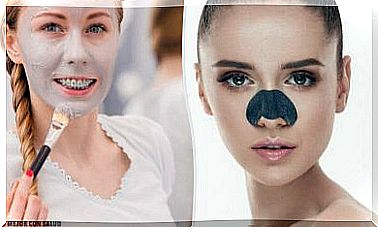Interesting Facts About Sleep Disorders In Childhood
Sleep disorders in children are sometimes caused by incorrect behavior. But there could also be organic reasons for this. In this case, a specialist must examine the child and determine the correct therapy.

Sufficient sleep is essential for physical and mental health, especially for children, but also for adults. However, it is estimated that up to 30% of children in our modern society suffer from insomnia. Today you will learn interesting facts about sleep disorders in childhood and how these are often triggered and treated.
Studies show that around 50% of children suffer from sleep problems at some point. However, these are usually not diagnosed as sleep disorders because parents often explain the problems as a lack of discipline and obedience.
But if a child does not sleep well, it also affects their behavior and their ability to learn. In addition, the child’s concentration and memory skills decrease. In addition, this can also lead to impaired motor behavior. The affected child is usually irritable and their self-esteem is weak.
It is therefore essential to diagnose and treat sleep disorders in childhood in good time. Find out more about this topic today.
Sleep disorders in childhood

Childhood sleep disorders include all behavioral problems related to sleep. These include:
- Difficulty falling asleep
- Difficulty sleeping through the night
- Excessive tiredness
- Sleep at inappropriate times
- Abnormal sleep patterns
In the strict sense, one speaks of sleep disorders in childhood if the following two circumstances apply:
- The sleep problems significantly affect the child’s daily activities.
- These are sleep problems that make relationships with family, school, or in general difficult.
It is quite normal for the child to change their sleeping habits if, for example, they are nervous about unusual or new situations. For example, the loss of a family member or a family conflict can lead to altered sleep patterns. But usually the child will return to normal sleeping habits in a short time. If this is not the case, however, there is a sleep disorder.
Types of sleep disorders in childhood
The most common sleep problems are classified as follows:
- Dysomnia:
- Narcolepsy
- Obstructive Sleep Apnea Syndrome
- Restless legs syndrome
- Delayed sleep phase
- Borderline disorders
- Difficulty falling asleep
- Parasomnia :
- Confused waking up
- Sleepwalking
- Night terrors (Pavor nocturnus)
- Sleep disturbance due to rhythmic movements
- Speaking in sleep (somniloquie)
- nightmares
- Other parasomnias:
- Bruxism
- Nocturnal enuresis (bed-wetting)
- Benign neonatal sleep myoclonus
- Primary snoring
- Childhood sleep apnea
- Sudden infant death
Investigations for the diagnosis of sleep disorders in childhood

If the child has trouble falling asleep, snores, or has difficulty breathing and is restless while sleeping , the parents can assume that they are having trouble sleeping. Bed-wetting or being very tired during the day are also clear indications that should be examined by a doctor.
The information provided by parents about their child’s sleep behavior is essential for the diagnosis. Depending on the clinical history, the doctor may also perform the following tests:
- Polysomnography: This enables the most extensive examination of a child’s sleep. Brain activity, heart functions, breathing and muscles are examined during sleep.
- Polygraphy: This method enables the child’s sleep to be monitored from home.
- Cardiorespiratory Monitoring: This method is used with infants who have sleep apnea or who have difficulty breathing. Heart rate and breathing are continuously monitored.
A blood test is usually also done if the child has excessive tiredness and irritability . This can be used to determine whether the child is suffering from anemia, parasites or thyroid problems.
Possible treatments
Treatment for sleep disorders depends on the underlying causes. The pediatrician will recommend the correct therapy after a thorough examination. In all cases, however, healthy sleep hygiene is important to be successful.
The age-appropriate sleeping times must also be taken into account:
- Between 0 and 3 months, a child usually sleeps 16 hours a day.
- It takes 15 hours between 3 and 12 months.
- Between 12 months and 2 years, the child only sleeps 14 hours a day.
- Between 2 and 5 years of age, it takes around 13 hours of sleep.
- Between the ages of 5 and 9 years, 10 hours is normal.
- Between the ages of 9 and 14, 9 hours of sleep are typically required.
- Young people between the ages of 14 and 18 only need around 8 hours of sleep.
In order to correct behavior patterns and thus improve the child’s sleep, many recommend the Ferber method. It is a very effective strategy that is used on infants. The main thing is to create different routines that will help the baby fall asleep.
If the parents suspect that there may be physical problems, then a specialist examination and treatment is definitely required.









